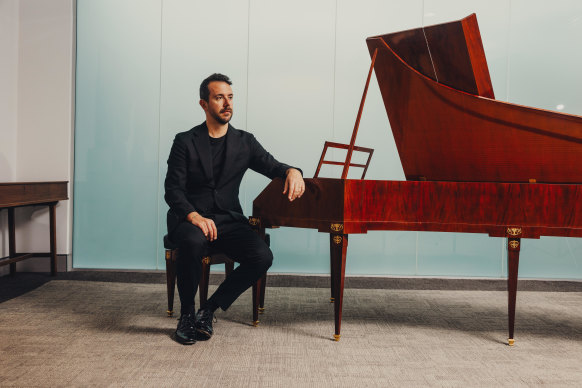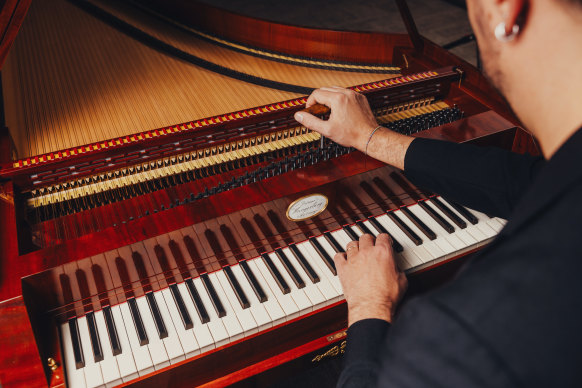
Francesco Corti is one of the few people to have played Mozart’s own fortepiano. One of the world’s leading harpsichordists, Corti is also a virtuoso organist and pianist, a conductor, musical director of the Royal Swedish Opera at Drottningholm, academic and teacher at Basel’s Schola Cantorum in Switzerland.
In a series of Australian concerts with the Australian Brandenburg Orchestra, the musical polymath will play Mozart’s magnificent 23rd piano concerto. The concert at the Melbourne Recital Centre will also includes Mozart’s final symphony, Jupiter.

Francesco Corti will perform on a replica of Mozart’s fortepiano in a series of concerts in Melbourne and Sydney.Credit: Dion Georgopoulos
When we talk, Corti has just arrived in Australia and has played “literally just five notes” on the fortepiano he will use, a replica of Mozart’s commissioned for the the Brandenburg Orchestra. But he can already tell that it is a beautiful, full-sounding instrument, very similar to Mozart’s own, which he knows having played it at a concert in Salzburg, Austria.
That experience was very emotional, Corti says, but then the practicality of the concert kicked in. “It’s very stressful. Salzburg is an educated public, they know their Mozart very well, so you concentrate on playing as well as you can.”
What was touching, he said, was that Mozart used the keys in the middle of the keyboard so much, that “the central B flat and F sharp are actually consumed. You have this also in historical organs – the surface has almost a hole – and it’s a very tender feeling, a very private thing, very nice.”
Corti, 40, a specialist in historical instruments, says their advantage over modern pianos is their directness, intimacy and agility, while they also change the sound blend with the baroque orchestra, allowing each instrument to bring a distinct colour.

A modern piano demands the whole arm and sometimes the shoulder as well as the fingers, whereas with a fortepiano one uses only the fingertips.Credit: Dion Georgopoulos
“It brings a certain direct expression to the music, which tends to speak more freely in [historical] instruments. Some intentions of the composers which are in the notation are much easier to translate into music than if you play a modern instrument.
“On a fortepiano like the one I have, the action is so much more agile than a modern piano that you can do more articulation and accents and the little details in the phrasing that wouldn’t be possible on a modern piano.”









 Add Category
Add Category